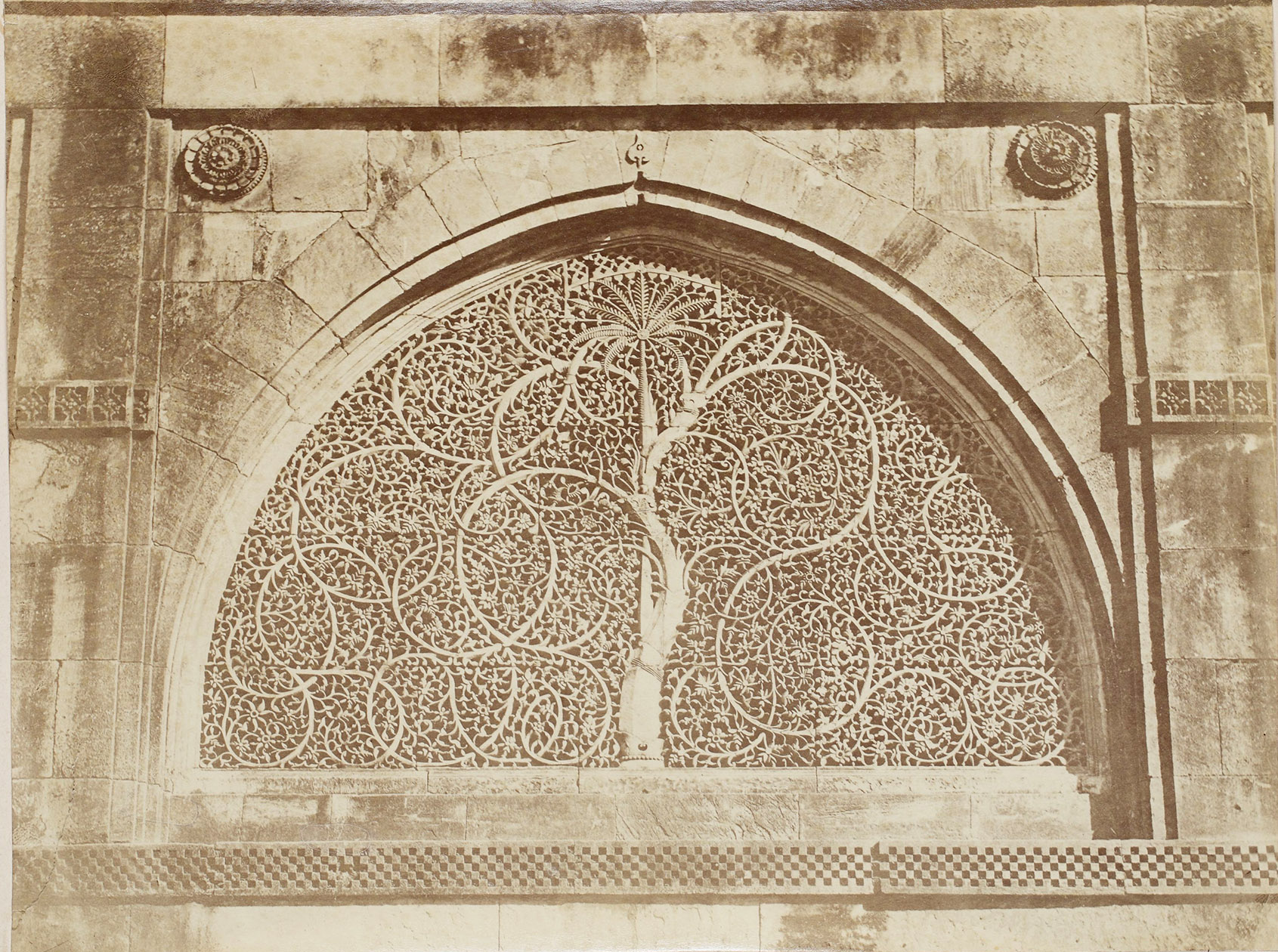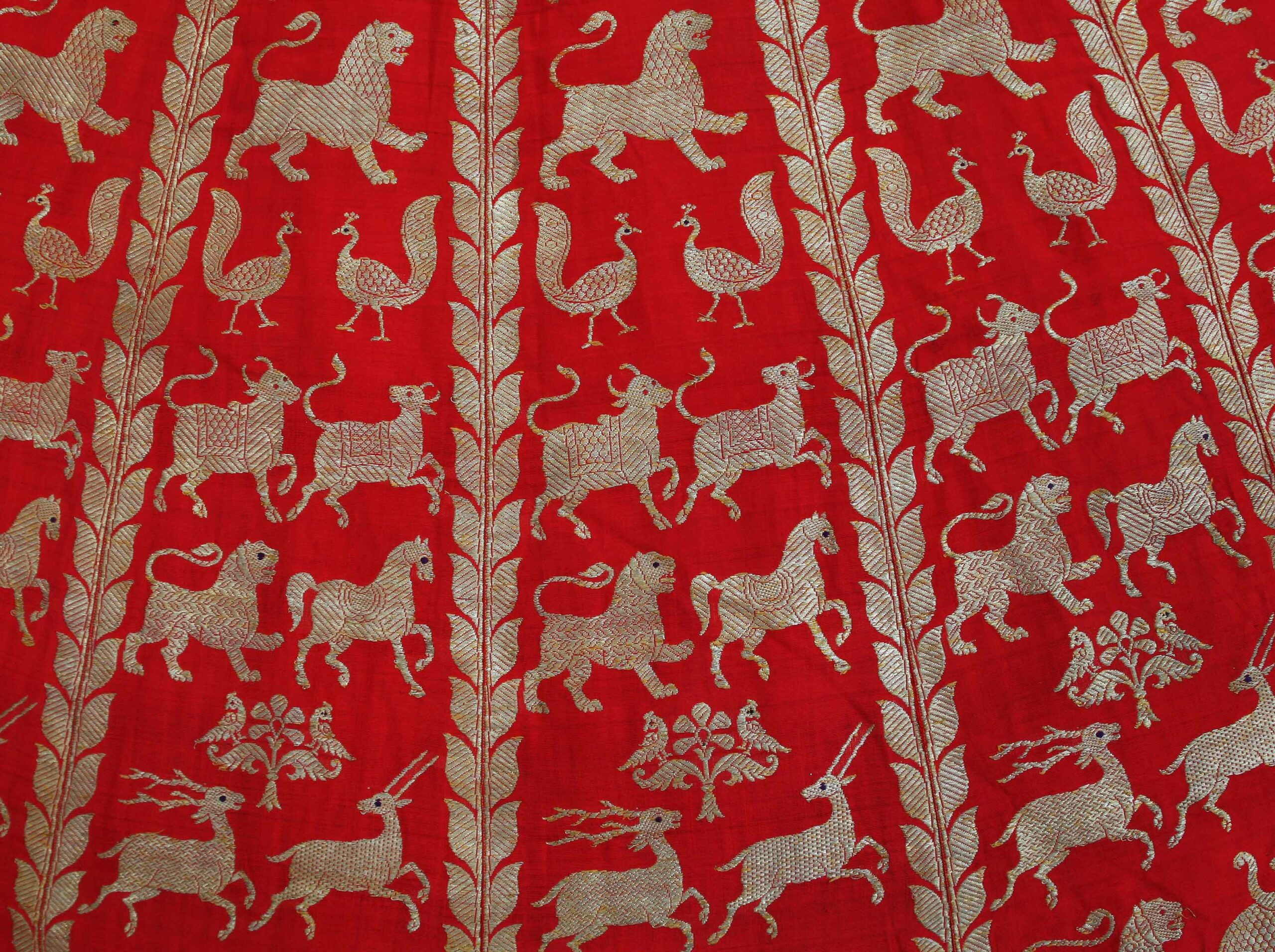Dulari Devi is an artist but she wasn’t always one. This is how the story begins in her autobiographical children’s book, Following My Paint Brush, published by Tara Books, an independent publishing house that brings art by Indian women, folk and indigenous artists to young readers. Coming from a community of fisherfolk in Bihar, Dulari was used to a life of constant, back-breaking work and monotonous routine. Never sent to school or trained in any vocation, she was tired and wished for something more. Then one day, a seed was planted. While passing by the village pond, the whole scene turned into an illustration in her mind.
Dulari Devi worked as domestic help in a Mithila artist’s house, where she became an unexpected apprentice. She learned the ropes quickly, until she was so comfortable in the language of Mithila art that she began to adapt its conventions to her own style.
Following My Paint Brush chronicles Dulari Devi’s journey from menial labour to becoming a recognised artist. Just as she followed her inclination, the team at Tara Books too followed her instinct in the making of this book. Swishing colours, bold lines and swirling patterns take the shape of Dulari Devi’s life, as the book sensitively captures both the art and the artist. But what choices were made behind the pages and in between the lines? V Geetha, Editorial Director of Tara Books talks to Sarmaya about Dulari Devi, folk art and the art of publishing.
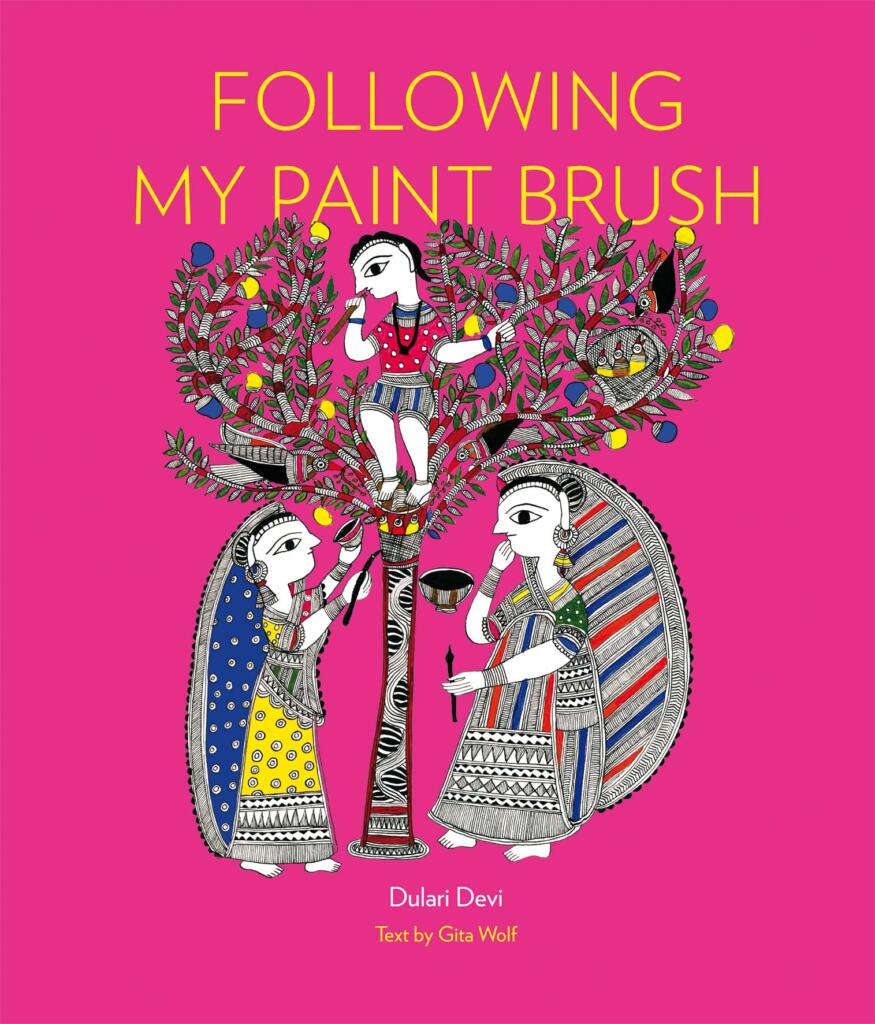
Tara Books publishes various folk styles and art but what drew you to Mithila art? What was Tara Books’ first venture into Mithila?
When we started working with artists from folk/village traditions and from Adivasi communities, we realized we had to teach ourselves quite a bit about these art forms, their past and present status, the histories of communities… At that time, we happened to read Jyotindra Jain’s book on the renowned Mithila artist, Ganga Devi and were struck by the parallels between her response to the world, including the US, which she had visited, and Bhajju Shyam’s response to his time in England – this was 2001-02 and we were working with Bhajju on what became The London Jungle Book. So, we wondered if we ought not to work with artists from the Mithila tradition, who were rooted in their context, but also looked outward, for new subjects, and to push the boundaries of their form. I happened to see an exhibition by Santosh Kumar Das in Delhi around the same time, and so one thing led to another, and we invited Santosh Das to come and work with us, along with other artists that he knew. He agreed and came with a group of people, including Dulari Devi and Amrita Das.
We were intrigued by the team, since Mithila is a quintessential female tradition, and here was a man who had come to paint brilliantly, and he brought along not a woman from the Brahmin or Kayasth communities, traditional practitioners of the form, but from a community that had no historical associations with it. We were very intrigued and excited, and thus began our work with Mithila artists.
Can you tell us a bit about the use of Mithila art in telling the woman’s perspective given that it’s a tradition entwined with the tale of Sita?
Mithila is a female art form. Women created this art on the walls of homes during significant rites of passage, including marriage and childbirth. Some of the favoured subjects included scenes from the epics, particularly to do with Krishna and Radha. As far as we know, the form did not work with narrative, but more with patterns, motifs…
In the late 1960s and 1970s when Bihar was in the grip of a famine, the Government of India undertook an initiative to update the form, by providing women with materials to draw with on a wide scale, so that they could produce for the arts and crafts bazaars. And from then on the form has blossomed and expanded its repertoire of themes. While originally Brahmin and Kayastha women alone drew, now many others including Dalits and women from bahujan communities draw, and today there exists distinctive styles, associated with particular communities.
While Mithila is Sita’s home, so to speak, the art does not directly reference her story, as far as I know. I do know that the women artists are confident, expressive and great innovators. Ganga Devi, Mahasundari Devi… great names and great art.
Have you met Dulari Devi? How would you describe her style?
Yes, she visited Chennai and worked with us for over a week. She is extremely talented, and fearless, that is, she takes to new ideas and themes without being too anxious. She learned her art, watching Mahasundari Devi draw, so her style has been shaped by the latter’s lines and colours. But Dulari is today an independent artist, with a style that is her own: she retains the attention to decorative detail, is familiar with the motifs that are part of the Mithila tradition, from the lotus to the birds to the way leaves on trees are shown… she is a storyteller too, and does not demur from recreating scenes that are not quite the staple of Mithila art.
What unique aspect did she bring to the table besides her story? What stands out to you in her body of work?
Confidence. A fantastic sense of colour and composition.
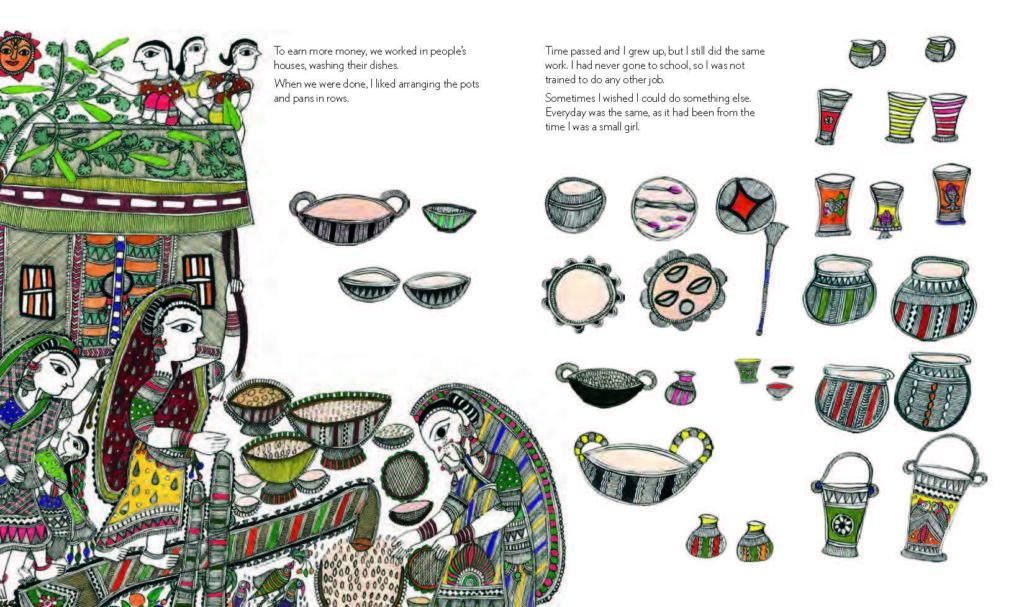
Page from Following My Paint Brush
In an interview, Dulari Devi mentioned that she couldn’t point to when the artwork was completed. How did you go about editing her stories?
For many of the artists we work with, the art is in the doing, and the practice of it is an aesthetic expression in itself. One image leads to another, and while working on the second, an artist returns to the first to complete a detail, finish a pattern… there is a nestedness to the art…
In our work with artists, including with Dulari, we evolve a book through conversation, interaction. Firstly, we explain why a book is different from a standalone painting: that it comprises a set of images, each of which follows the other, and that there ought to be a relationship between images. This could be established through a storyline, or through the imagery, or both. Secondly, we discuss story-boarding – the breaking up of an idea or an event into a scene, a composition. We also look at examples of the artists’ work and suggest that they might want to work more with this aspect of their art, rather than that etc.
Once convinced, artists do rough sketches, and once they are in place, they start finishing them up.
We don’t edit in a conventional sense: we develop the book, along with the artist. After the art is done and the narrative in place, we work with a designer to complete the project. To us, the design voice is as important as that of the author/artist.
What are the challenges of publishing autobiographical art? How did you help Dulari Devi bring out her memories and creativity in anecdotes?
Many of our art traditions, even if they are not narrative ones, are linked to events, occasions, and so to stories, happenings. Artists are full of stories in any case, of how they came to draw, their ways of drawing and so on. When the Mithila artists came to Chennai, we held a workshop with them, where we requested them to speak of their work, and of the things they would like to show in a book. And so people came up with stories, themes, ideas… Dulari wanted to do a book for children to show them how a so-called ordinary woman like her became an artist. She spoke a lot about her life. We listened, recorded her story, took notes, and then put it all together into a narrative. We re-narrated it to her, and when she seemed alright with it, steered the conversation towards drawing, storyboarding etc.
And what about when it’s non-anecdotal, and artists choose to draw objects or animals they have never seen before? How do you go about translating this imagination, collaboration, language and material from canvas to book?
I think I have answered this question partially above, in my account of how we work with artists. Artists are imaginative persons, and endlessly curious, and are eager to turn their hand to new things. Dulari for instance loved drawing an ice cream cart. And of herself washing vessels as a little girl. Having said that, I must say there are artists and artists: some like to keep within the grammar of what they know, while others seek a balance between the familiar and the new, and yet others are adventurous…
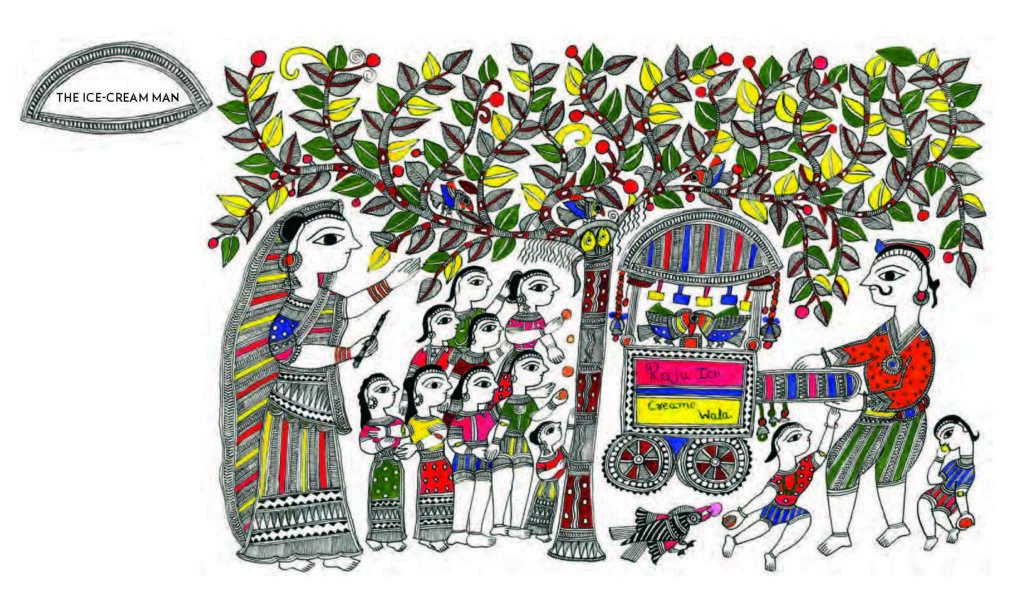
Page from Following My Paint Brush
Have you worked with other Mithila artists? Is presenting their stories in autobiographies a way to give them respect and recognition that the art market doesn’t always give them?
Yes we have several books, featuring Mithila art”
Black by Santosh Kumar Das, which features his journey as an artist and it is a handmade book in black and white (now out of print) comprising art so precise and intricate that each picture looks like it has been carved onto the page.
Waterlife by Rambharos Jha, also a silkscreen printed handmade book which comprises a set of absolutely beautiful drawings, based on his memories of growing up on the banks of the Ganga, and also his sense of the ocean. Each picture is accompanied by a short anecdote, a note by the artist that helps us place the image in context. This book has gone into several world languages, including Japanese, Korean, German…
Hope is a Girl Selling Fruit by Amrita Das recalls her journey from Bihar to Tamil Nadu through a set of absolutely brilliant and intricate images. And in the event, demonstrates how she became an artist.
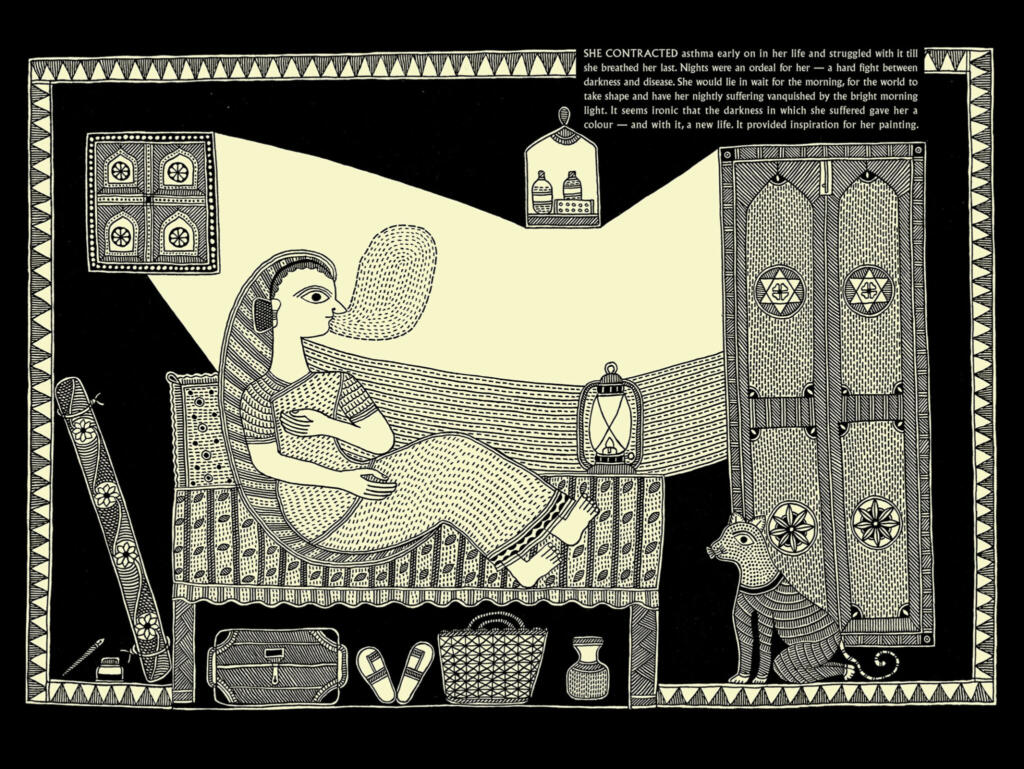
From Black by Santosh Kumar Das
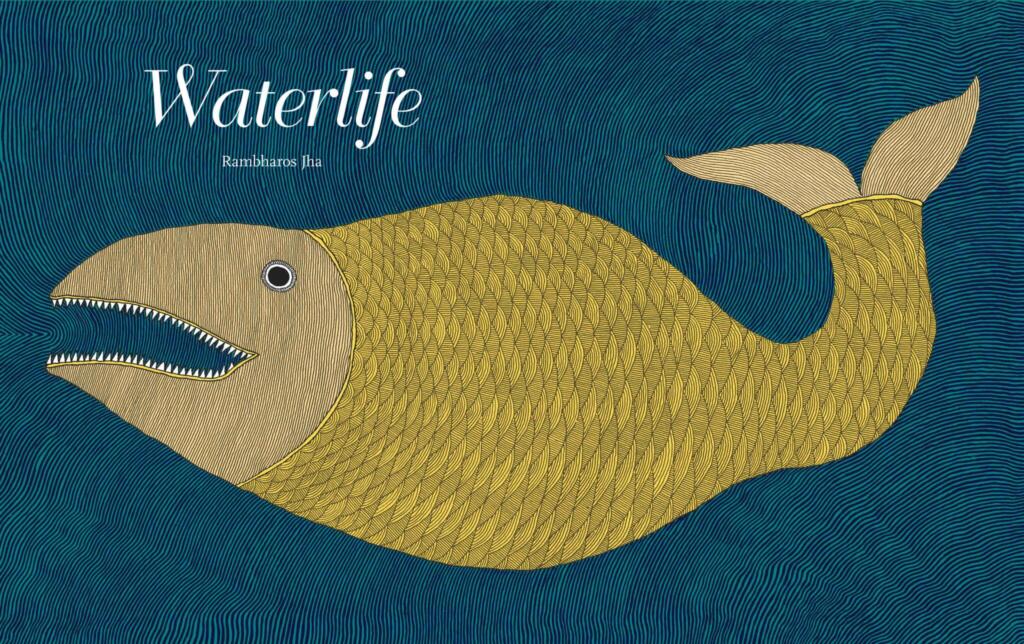
Waterlife by Rambharos Jha
Why is it essential to learn about artists? Why did you decide to publish stories about artisans’ lives for children?
So that children and adults come to understand the diverse ways and means through which art is created, and the many and different worlds that indigenous art forms bring to life. Also we believe that art happens in many places and there is no one kind of artist. An artist can be rich, poor, formally literate, or not, be part of a tradition or self-taught… We also would like children to understand how art is linked to everyday life, and that it is not a thing set apart, or one that you can only enjoy if you have money and leisure. By bringing art, artists’ stories into the book form, we provide a mobile gallery of images and stories and in that sense, each of our books is like a room out of a museum or gallery.
How do artists’ journeys reflect the history of the art form?
In the doing: by drawing their life stories, artists extend the boundaries of their art form. Dulari Devi, for instance, uses the familiar fish image to an entirely new purpose in Following My Paintbrush: it does not stand so much for fertility as it does in the original grammar, but is an aesthetic motif that connects with her story. There is this lovely image where the fish literally jump out of the painting… You also see how a motif is reinterpreted in Hope is a Girl – Amrita Das uses the traditional images of the lotus, associated with marriage and auspiciousness as a holding frame to depict the state of her mind, the progress of her thoughts…
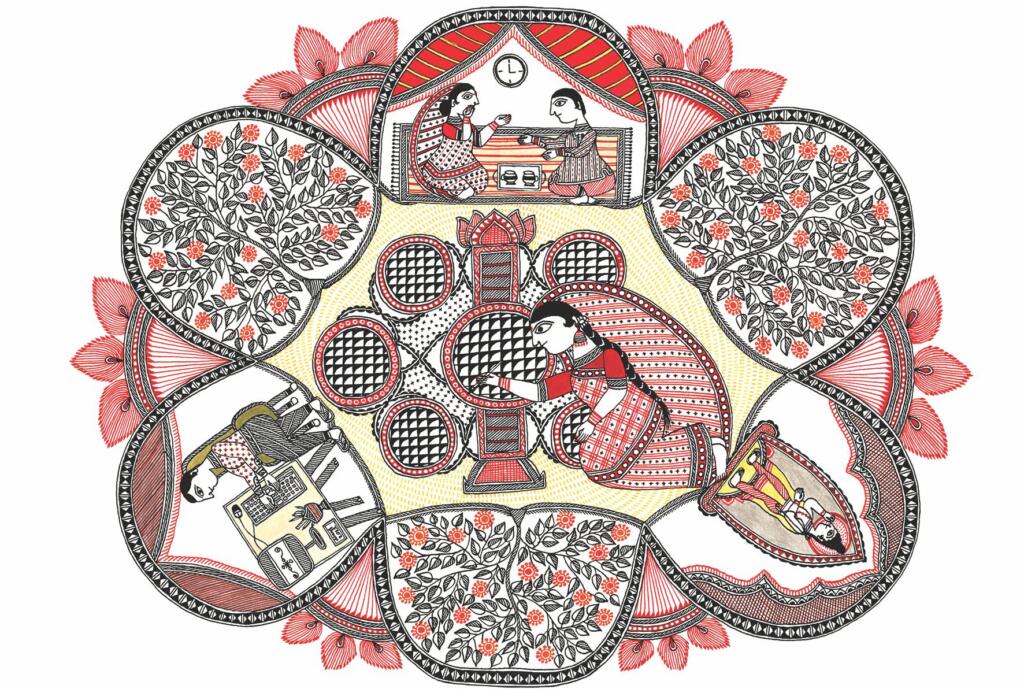
From Hope is a Girl Selling Fruit by Amrita Das
Are you planning to work with Mithila art again? What other folk arts are in the pipeline for Tara?
We would like to. We have worked with more than half a dozen traditions – Mithila, Warli, Gond, Patua, Patachitra, Meena, Mata-ni-pachedi, Bhil, urban folk from Guajarat. Currently are working on a book with patua artist Swarna Chitrakar from West Bengal, on the pandemic; another with Sangita, who draws an urban folk style made famous by her parents Ganesh Jogi and Teju Behan. We’ve also had a recent release, The Deep, a stunning silkscreen printed handmade book on the ocean by the very talented Vayeda brothers who are from the Warli community. The book comprises layers of paper, bound in the Japanese style, with each layer marking an entry point to the sea.

